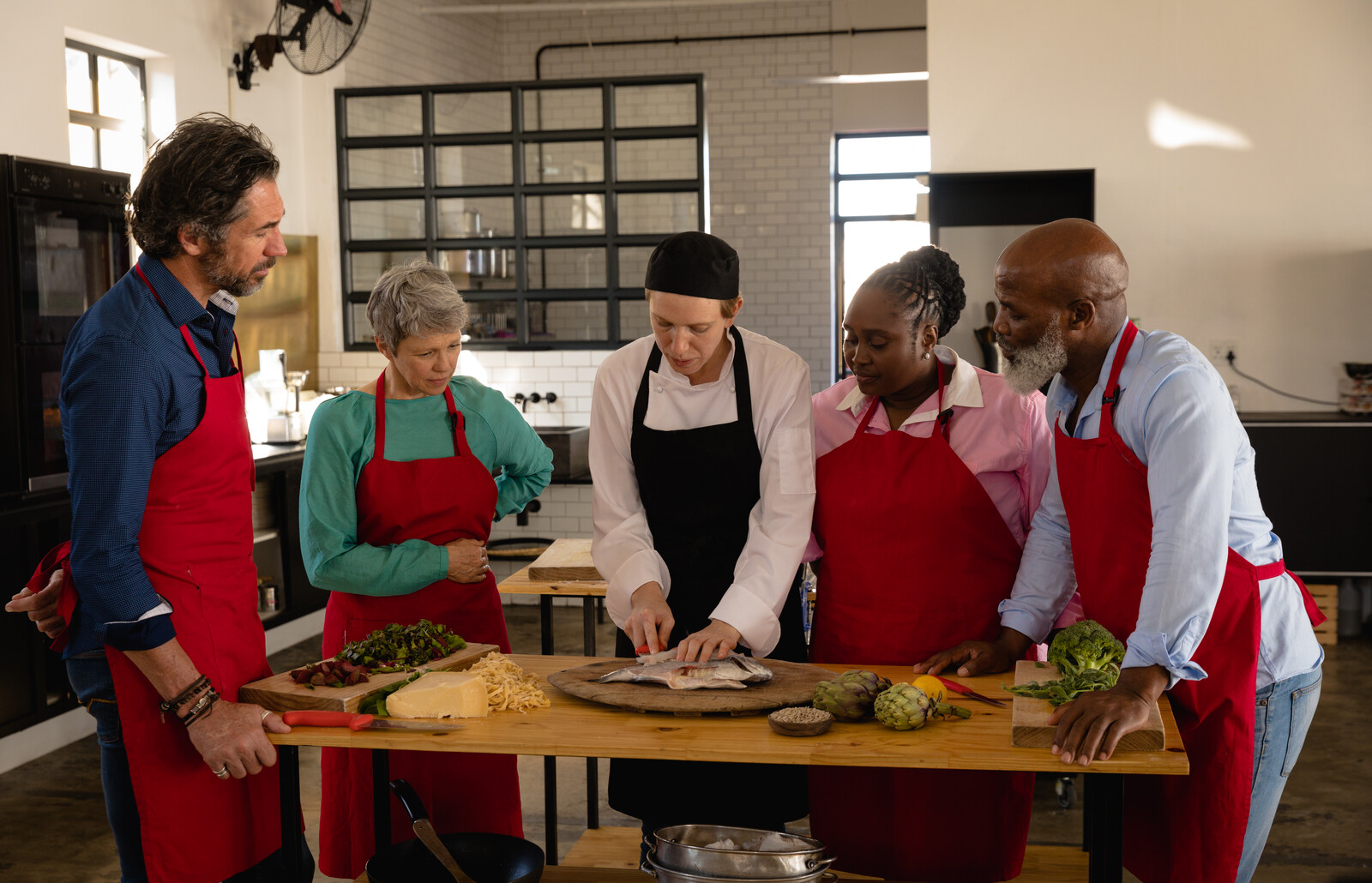Most restaurant managers and owners have invested in staff training to some degree. It’s long been understood that training improves performance and increases employee satisfaction which in turn creates happy customers and drives repeat business. But few restaurants have unlimited time and money for training. So managers have to make training time count. Here are some tips for developing an effective program that won’t squeeze the schedule or the budget.
1: Formalize Policies With an Employee Handbook
You’ll explain everything new staff needs to know in person, but they still need everything written down for future reference. Employee handbooks help you reinforce essential procedures and tasks in accordance with your brand values and mission.
The handbook should include
- a statement of your vision and core values
- a code of conduct and workplace policies
- dress code
- safety procedures and policies
- health procedures
- instructions for using applications, such as scheduling, time management, BOH and FOH management
- security procedures
- compensation and benefits
Many handbooks also include sections on career development, company history, or frequently asked questions.
2: Formalize an Effective Program With a Training Plan
Training is much more than a day of onboarding. New employees will need coaching and refreshers, and veterans will need career development. Plus, as menus and policies change, you’ll occasionally conduct training for the whole team. Create plans for each type of training that outline topics, timeline, and audience. Plans tell employees what to expect and the objectives of the session while ensure that all important content is addressed.
3: Prepare New Employees With Videos
When you hire on new people, you can give them a head start on learning with videos they can watch from home. Videos allow learners to go at their own pace and don’t tie up trainers’ time. You can purchase professional programs for restaurants or film your own videos that provide some background about the restaurant and demonstrate how to complete essential tasks.
4: Make Training Fun With Gamification
Turning training into a game helps engage employees and strengthen esprit de corps. You can purchase online games or video simulations, but you don’t have to get fancy. For example, you can set up badges that people earn as they pass training sessions or reach milestones. You can organize competitions between teams who can earn points for demonstrating specific skills or reaching stretch goals on audits. Offer small prizes for winners to sweeten the pot.
5: Practice Skills With Role Playing
Role playing can help learners practice handling the curve balls that customers sometimes throw. Role playing is especially effective for hosts and servers, helping them try out ways to handle complaints, solve problems, and interact with diners according to brand values. Role playing can be good for BOH employees as well for working on conflict resolution and communication. Make role-playing scenarios as realistic as possible for the best results.
6: Reinforce Initial Training With Job Shadowing
There’s nothing like experience to help new employees digest and apply what they’ve learned, but just throwing them on the floor to sink or swim can turn into a disaster. Many restaurants rely on peer training or shadowing to help new folks get up to speed. Learners watch how experienced people handle the work in the midst of typical distractions and pressures. They can try it themselves with a veteran to offer advice or jump in if needed. Plus, it helps new people get to know their colleagues and feel a part of the team.
7: Build a Resilient Team With Cross-Training
Keep experienced employees engaged and growing with cross-training – teaching them how to fill other roles. Cross-training makes it easier to find someone to step in if you’re short-handed. It also helps employees cooperate better because they understand each other’s objectives and challenges.
8: Grow Revenue with Sales Training
Help servers understand how to increase sales by teaching them the subtle skills of good salespeople. Ensure they know the menu cold, how to describe specials, how to sell drinks, appetizers, and desserts, and how to keep customers happy. With sales training, servers grow more confident, and their tips reflect their larger sales.
9: Get a Large Group Up to Speed With a Test Shift
If you’re bringing on a host of new people, have them come in on an off day for a test shift. They’ll be able to apply newly learned skills and make mistakes without any real consequences. Managers can watch and coach as they go. Veteran employees can serve as “customers” and create challenges for the new team to tackle.
10: Reinforce Learning With Pre-Shift Presentations
When the team is together for pre-shift meetings or regular weekly meetings, take a few minutes for short learning presentations. Remind people of important procedures, run post-mortem discussions on recent challenges, or celebrate good performance. This is also a great time to let employees train each other by leading the discussion.
11: Improve Training Over Time With Employee Feedback
Feedback from trainees will provide insights into how you can make training more effective over time. Ask people what they found valuable and what seemed irrelevant. After a few weeks, ask new employees what they remember from the training so you can learn which messages sunk in. It’s also a good idea to find out what types of training people found most engaging so you can add more of that to the program.
12: Make Training Part of Every Day With Checklists and Audits
While there are times when you want to pull people off the floor for training, you can weave training and reinforcement into everyday work. With user-friendly applications, like digital checklists, staff can confirm they’ve followed procedures and completed their tasks correctly on their shifts. Staff gain confidence in their work and managers can keep tabs on their progress. Plus, checklists help ensure essential steps for health and safety are completed correctly so external audits won’t find problems.
With digital audits, district managers can assess how well procedures are followed in general, including how customers are treated, how food is prepared, and how well employees execute brand values. These audits will highlight areas where staff are struggling, so managers can mentor individuals or provide targeted training for teams where they need it most.
Bonus Tip: Boost Your Training Results Fast With MeazureUp’s Solutions
MeazureUp’s digital checklist, DailyChex, and mobile audit solution, AuditApp, help employees learn and improve during every shift.
- Put documented procedures, SOPs, videos, and instructions on employees’ phones for easy access.
- Set up customized checklists and audit lists for accountability and transparency.
- Track performance over time by individual, team, location, or region.
- Enrich audit and checklist reports with photos, videos, and comments about areas that need improvement.
- Quickly create reports that highlight any performance issues and identify outstanding contributors.
A study from the Center for Hospitality Research at Cornell University has found that it costs 4 times more to hire a new person than to train a current employee. With a little effort and excellent tools like MeazureUp’s solutions, you can build the kind of loyal, high-performing team that drives every successful restaurant.



